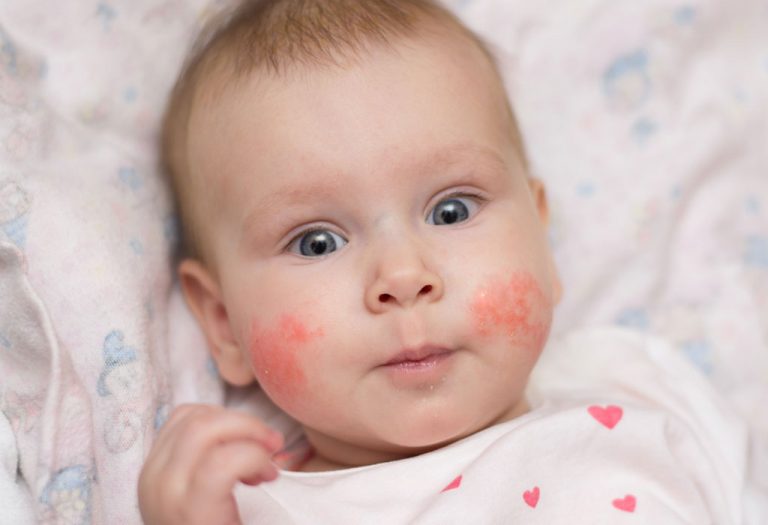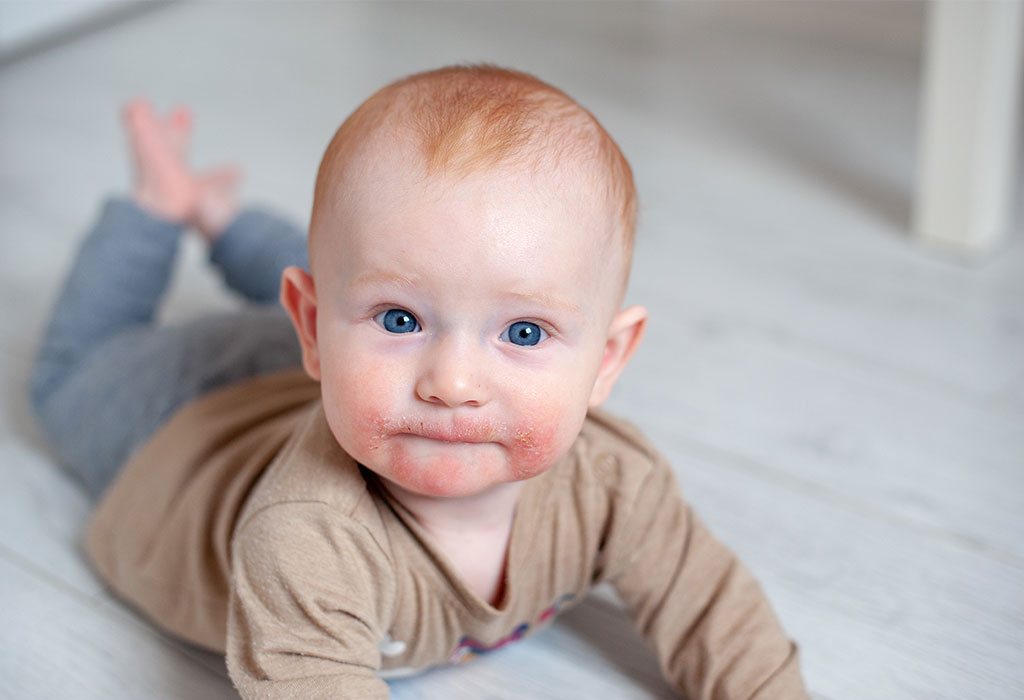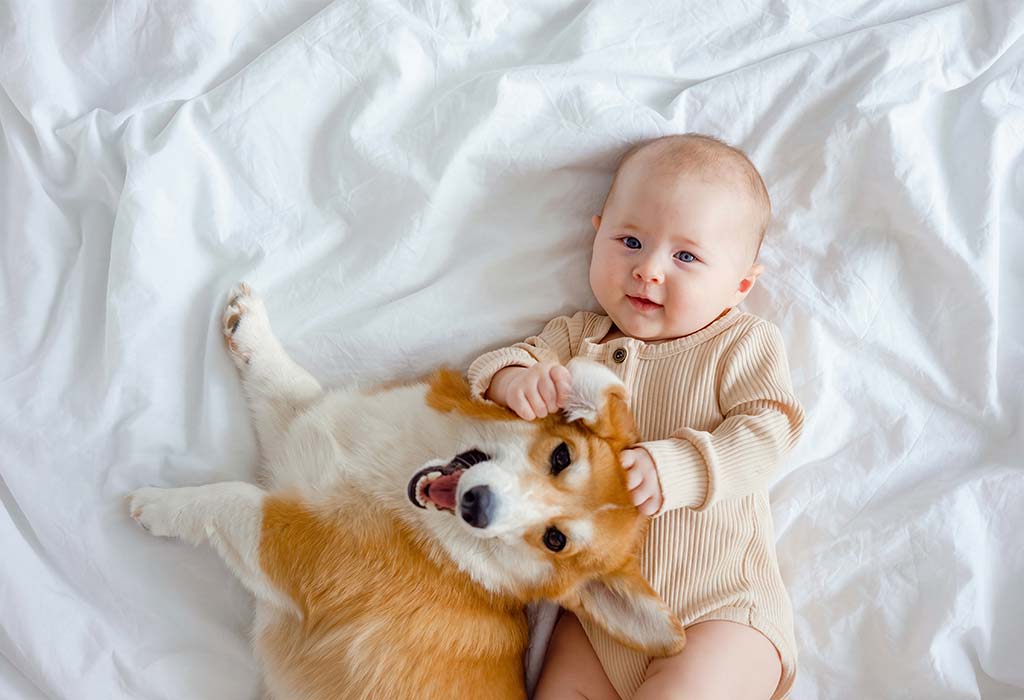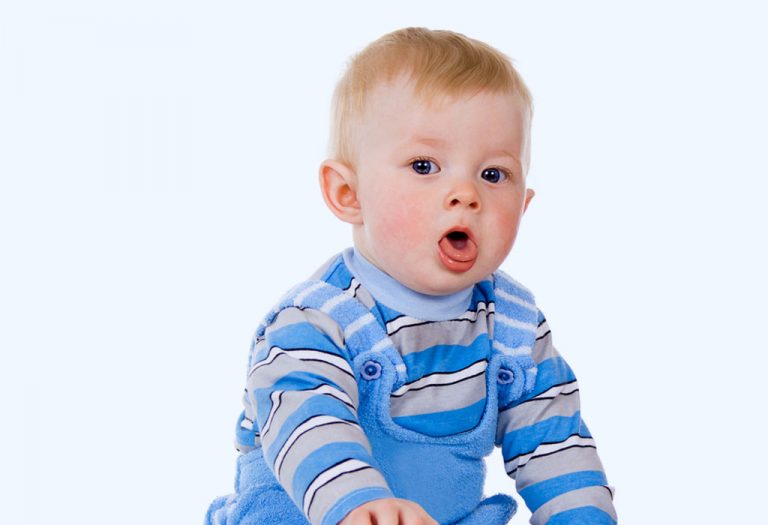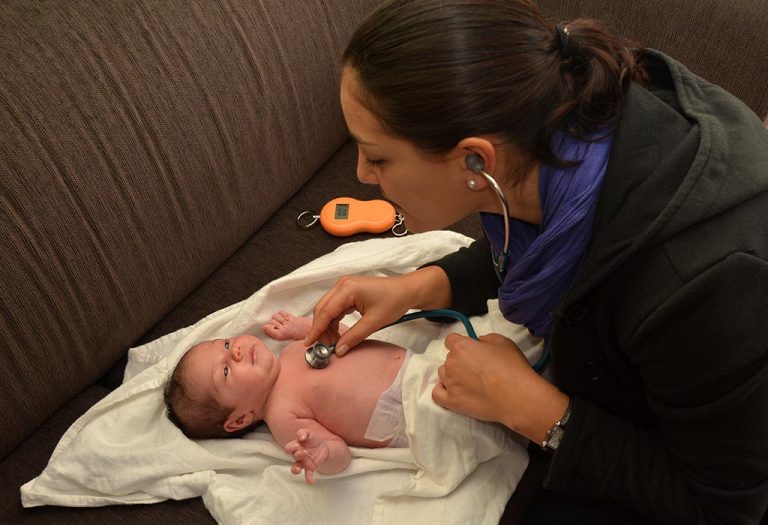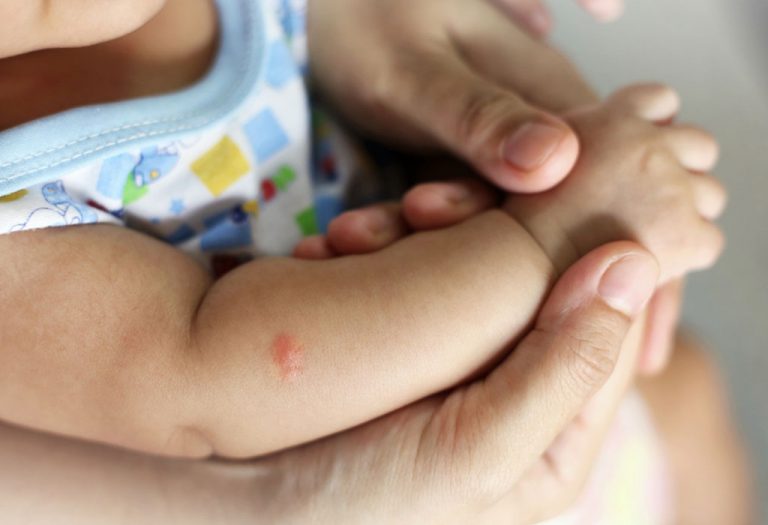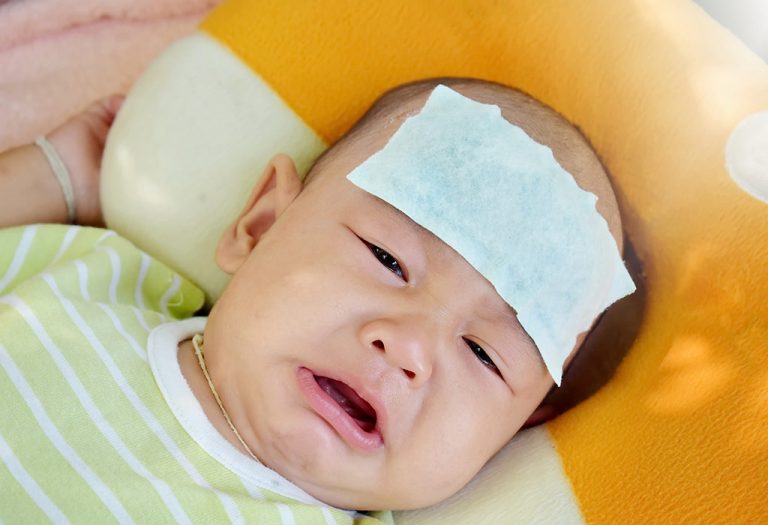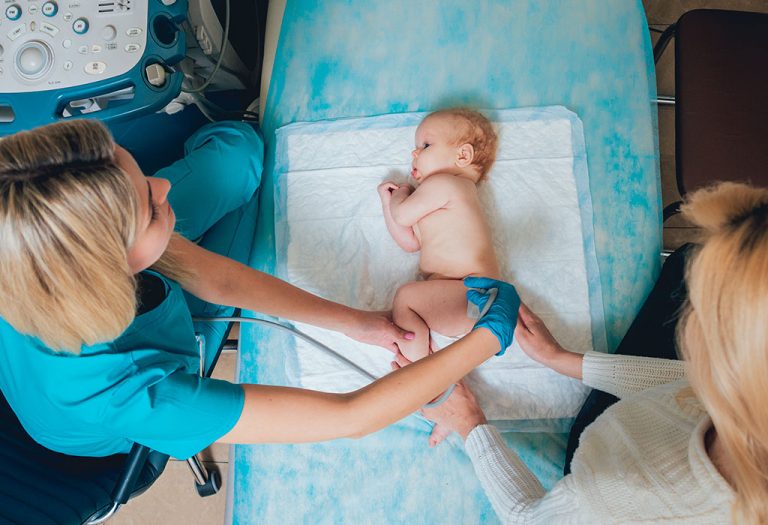Allergies in Babies – Types, Signs, Treatment & Prevention

In today’s day and age, where we come across numerous medical disorders, allergies are quite common, and aren’t necessarily meant to be feared. Not just adults, but even infants are prone to allergies, which can sometimes lead to a baby allergic reaction. Food allergy is the most common type of allergy seen in babies, often triggered by ingredients like milk, eggs, or peanuts. Allergies in babies appear randomly, and parents must stay vigilant to identify symptoms such as rashes, swelling, or difficulty breathing. You need to be aware of the most common causes of various allergies and how to handle them, including when to seek immediate medical attention. Understanding these reactions early can help prevent severe complications and ensure your baby’s safety. Proper diagnosis and care are essential in managing baby allergies effectively.
What Is an Allergy?
‘Allergy’ is a commonly used term to indicate an abnormal reaction to some commonly known substance. The body becomes hypersensitive to certain substances. An ‘allergic reaction’ is the outcome of the body’s reaction to this trigger (1).
Babies are allergic to some foods such as milk, eggs, nuts, wheat, and fish. They might develop rashes, difficulty in breathing, and continuous sneezing due to an infant allergic reaction.
Can Newborns Have Allergies?
Yes, newborns can develop allergies, though they are less common than in older babies. A baby allergic reaction may occur due to allergens in breast milk (like cow’s milk or peanuts) or from formula ingredients, causing symptoms such as rashes, vomiting, or fussiness. Environmental factors like dust, pet dander, or laundry detergents can also trigger mild reactions. While severe allergies are rare in newborns, parents should watch for persistent symptoms like eczema, diarrhea, or breathing difficulties.
How Common Are Allergies in Babies?
Babies are prone to allergies, as they are fragile, and their immune system is still developing. Babies may be allergic to food as well as to other external substances.
Who Is at Risk of Getting Allergies?
It is difficult to determine a single trigger for allergies, so it is not easy to identify whether your baby may develop an allergy or not. Nevertheless, genetics seem to have some connection to a person becoming allergic to a particular substance. If it runs in the family, then the chances of your baby too being allergic to the same things is very high. Sometimes, it might not be the same allergen (an allergy-causing substance) at all, but something entirely new that can cause an allergic reaction on a newborn. Infants are at an increased risk as their immune system is not fully developed.
Allergy vs. Cold
It is very easy to mistake an allergy for common cold because some symptoms are very similar. In fact, some people don’t even know the difference between the two.
Common cold is a virus, it is contagious. When you catch a cold, the body’s defence counter-attacks and as a result of this you get cough, fever, aches and pains. It might take many days and some medication to get rid of the cold.
On the other hand, allergies are caused by the body’s overly sensitive immune system. The body senses otherwise harmless things as a foreign body and begins to attack them. This might cause an allergic reaction like rashes or sneezing. Some commonly known allergens are milk, soy, fish, dust, pollen, nuts and wheat. Unlike cold allergies, allergies do not go away so quickly, they keep recurring. They are also not contagious (2).
Signs Your Baby Has an Allergy and Not a Cold
If your baby is irritated and has a stuffy nose for an extended period, then the baby might be allergic to something. An allergic reaction, unlike a cold, shows up immediately. If you notice that the baby is unable to sleep with a stuffy nose or has rashes on the body, then there is a high chance that it is an allergy and not just cold.
How Do Babies Get Allergies?
Most allergies in babies are inherited and run in the family, particularly food-related ones like cow’s milk, eggs, or peanuts. While infants are less likely to react to environmental triggers like pets, dust mites, or pollen, exposure can still cause mild reactions such as rashes or congestion. Unlike older children, babies typically develop allergies through breast milk, formula, or direct skin contact rather than airborne particles.
Diagnosing of Allergies in Babies
Allergic reactions in babies can appear soon after exposure to an allergen. Common symptoms include skin rashes, fussiness, vomiting, or congestion. These symptoms may return each time the baby encounters the allergen.
While tests exist, observing your baby’s reactions is often the best way to identify allergens. Keep track of symptoms and possible triggers to help your doctor make a diagnosis.
Why Are Allergies on the Rise in Babies?
There is no single reason for the increase in allergies among babies. While outdoor pollution may play a role, some experts believe that overly clean indoor environments limit a baby’s exposure to harmless germs. This lack of early immune system challenges may prevent babies from developing natural defenses, making them more prone to allergies.
Allowing babies to explore their surroundings in a safe, balanced way—without being overly sterile—could help support healthier immune development.
What Is an Allergic Reaction, and What Happens During That Phase?
When we contract an allergen, the body releases antibodies to fight against these allergens, and those antibodies are called histamines. These histamines cause the blood vessels to swell up, which results in rashes, nasal blockage, sneezing, and itchy eyes making it difficult to breathe. Surprisingly, one kind of histamine attacks only one type of an allergy. For example, you may have an egg allergy, but you may not be allergic to peanuts.
What Are Common Allergies in Babies?
Some common allergies found in babies are:
- Food allergy
- Milk allergy
- Skin allergy
- Pet dander allergy
- Dust mites
- Pollen allergy
- Mould allergy
1. Food Allergies
Food allergies are the most common type of allergies found in babies. Research shows that around 4% of infants suffer from food allergy (3). Food items such as nuts, eggs, wheat, chocolates, and fish are known to cause food allergies in babies.
Symptoms
Some of the most common symptoms observed are:
- Blocked nasal passage (stuffy nose)
- Bloating
- Itchy or puffy eyes
- Stomach pain
- Diarrhoea
Complications
It is quite difficult when a baby has food allergies as they will not be able to express their discomfort. Although the symptoms mentioned in the previous section seem harmless, in some cases, the tongue becomes thick due to swelling of the blood vessels. This swelling can block the air passage and the baby might be unable to breathe (anaphylactic shock).
Treatment
Treatment for allergies is staying away from the allergens that cause those allergies. It might not be a practical solution. Medication such as antihistamines is prescribed by the doctor. Some food allergies disappear as the baby grows up.
Preventive Measures
It is best to stay away from food that causes allergies. If you notice that your baby is showing symptoms of an allergy, it is better to avoid those substances in the future.
Some breastfed babies are allergic to breast milk. This is more so because of the cow’s milk in the mother’s diet. Once they are given formula feed to replace breast milk they automatically get better. Signs of milk allergy in breastfed babies are; vomiting, diarrhoea, stomach pain, stuffy nose and no weight gain.
Your baby’s milk allergy might be only in the initial years, as he/she grows up the allergy might not exist.
Some toddlers are allergic to egg. It is more common in boys than in girls. If such is the case, avoid giving them eggs for a few years. You might want to try introducing egg in their diet after a couple of years to see if their allergy is gone.
2. Baby Skin Allergy
An average of 15–20% of babies have skin allergies, the most common one being eczema also known as atopic dermatitis (4). Other skin allergies are:
- Seborrhea
- Dermatitis
- Prickly heat
Eczema is a kind of skin disease wherein dry red patches appear on the body. It has a burning sensation and pus oozes from those patches. They leave a crusty patch after they dry.
Symptoms
Some signs of allergies in infants include red patches appear mostly on the neck, wrists and ankles.
Complications
Eczema, if left untreated can be very painful and it can become a life-long problem.
Treatment
Eczema is treated with a steroid (hydrocortisone) tropical cream.
Preventive Measures
Eczema can be easily managed with the following routine:
- Avoid the allergens, skin irritants
- Establish a regular skin care routine
- Avoid excessive scratching or rubbing the baby’s allergy rash
- Avoid stress
3. Nasal Allergies
Nasal allergies or respiratory allergies are severe and require immediate treatment. This allergy almost mimics common cold, but the difference is that cold affects the upper respiratory tract while nasal allergy affects the lower respiratory tract (5).
Symptoms
Respiratory allergies affect the airways and nasal passages causing coughing and wheezing. Difficulty in breathing and tightness in the chest are among other symptoms.
Complications
Wheezing or asthma is a serious condition as the baby might experience difficulty in breathing, so it is important to take the baby to the doctor immediately. Untreated nasal allergy can cause lung problems in future.
Treatment
Anti-inflammatory drugs or inhaled steroids are used to treat this allergy. These help in reducing the swelling in the nasal passages.
Preventive Measure
The best way to prevent respiratory allergies is to avoid those specific allergens. Below listed are some common ways to prevent nasal allergies:
- Use dust mite-proof mattresses and pillows.
- Avoid smoking at home
- Avoid carpeting the baby’s room
- Avoid pets indoors
4. Seasonal Allergies
Seasonal allergies are also called “hay fever”. They are contracted through airborne allergens such as pollen and mould. Otherwise, harmless pollen and mould are treated as foreign bodies, and the body fights against them by releasing histamines (6).
Symptoms
Some of the signs of allergic reaction in babies are:
- Allergies in babies eyes such as itchy eyes.
- Congestion
- Stuffy or a runny nose
- Itching in the ears
- Scratchy throat
Complications
Although seasonal allergies are not dangerous, they do make life difficult. If left untreated, they might turn into long-term health issues such as asthma, sinusitis and ear infections. Allergies in babies’ eyes make them very irritable and restless.
Treatment
Hay fever might require some medication apart from avoiding the allergens. Some common allergy medication for babies that include antihistamines and nasal decongestants.
Preventive Measures
The following are some preventive measures:
- Immunotherapy
- Rinsing nasal passages with saline
- Avoiding places with pollen and mould
- Using an air purifier
5. Pet Allergies
Pet allergies are caused by the baby breathing in the pet dander (flakes of skin), saliva, urine, and faeces (7). While animal fur is not so much of an allergen, it does attract a lot of pollen and dust.
Symptoms
The noticeable symptoms are as follows:
- Watery eyes
- A runny nose
- Sneezing
- Wheezing
Complications
There are no serious complications in pet allergy, but it can be very discomforting for the baby.
Treatment
Treatment includes immunotherapy, nasal sprays and bronchodilators.
Preventive Measures
- It is best to avoid pets at home especially indoors.
- Do not hug or kiss the pets.
- Vacuum regularly.
- Use air purifiers
- Regular pet baths
- Indoor Allergies
- Indoor allergies include allergies due to dust, pets and mould.
Symptoms
A cough and breathing issues are the key symptoms.
Complications
Although there are no severe complications, excessive cough and breathing issues can cause significant discomfort.
Treatment
Treatments include nasal sprays and immunotherapy.
Preventive Measures
It is advisable to keep the premises clean and avoid pets, if possible.
FAQs
1. Can a baby’s drool cause an allergic rash?
Excessive drooling (common during teething) can cause a contact irritation rash (like “drool rash”), but this isn’t a true allergy. However, if the rash spreads or persists, it could signal a food allergen transferred via saliva (e.g., after solids).
2. Can a baby develop an allergy to water?
While extremely rare, aquagenic urticaria (a reaction to water) has been documented in infants. Symptoms include hives or rash after contact with water. More commonly, reactions are due to additives in water (like chlorine) or temperature changes rather than the water itself.
Most of the allergies can be treated only if the allergen is identified. The best baby allergic reaction treatment is to remove or avoid those allergens. Although most allergies are not dangerous, they are very discomforting for babies; it is best that they are treated as soon as possible.
References/Resources:
1. Australasian Society of Clinical Immunology and Allergy – What is Allergy?
2. Mayo Clinic – Cold or allergy: Which is it?
3. National Library of Medicine – Food allergy in children—the current status and the way forward
4. Cleveland Clinic – Baby Eczema
5. National Library of Medicine – Environmental risk factors of rhinitis in early infancy
6. Nemours Kids Health – Seasonal Allergies (Hay Fever)
Also Read:
Hives on Baby
Seasonal Allergies in Babies
Formula Allergies in Babies
Symptoms of Banana Allergy in Baby
Was This Article Helpful?
Parenting is a huge responsibility, for you as a caregiver, but also for us as a parenting content platform. We understand that and take our responsibility of creating credible content seriously. FirstCry Parenting articles are written and published only after extensive research using factually sound references to deliver quality content that is accurate, validated by experts, and completely reliable. To understand how we go about creating content that is credible, read our editorial policy here.






